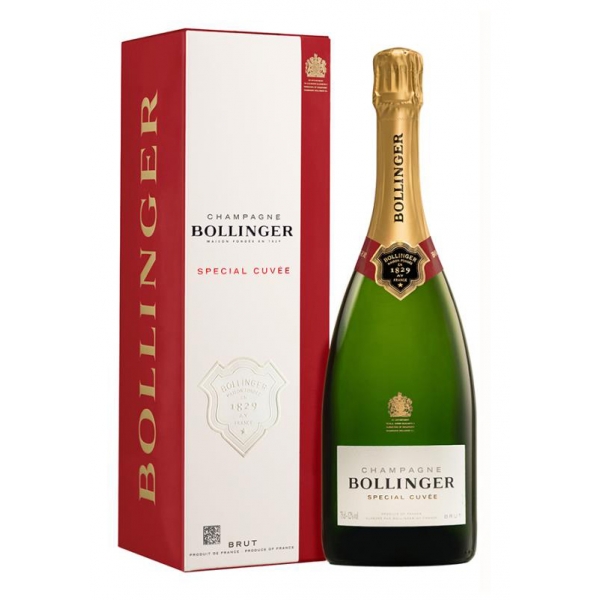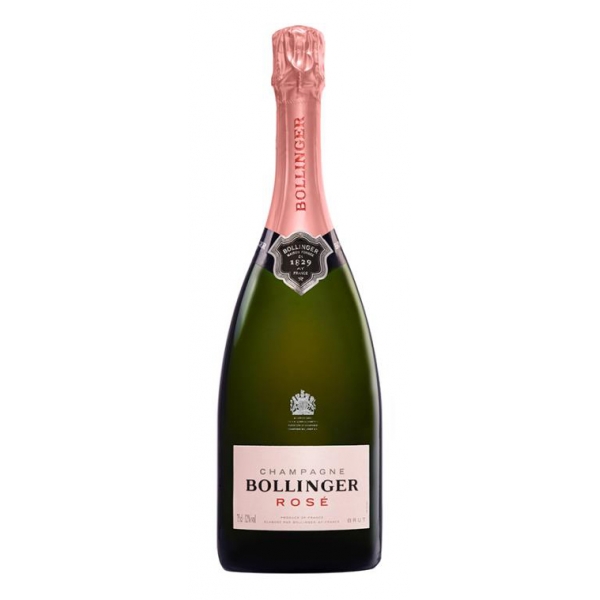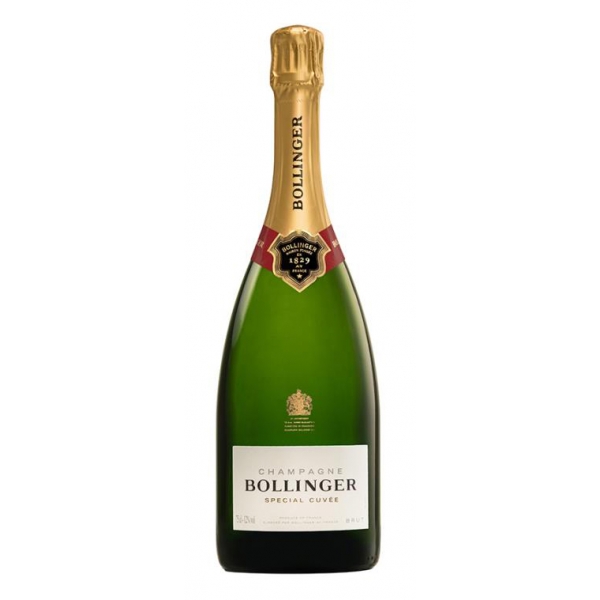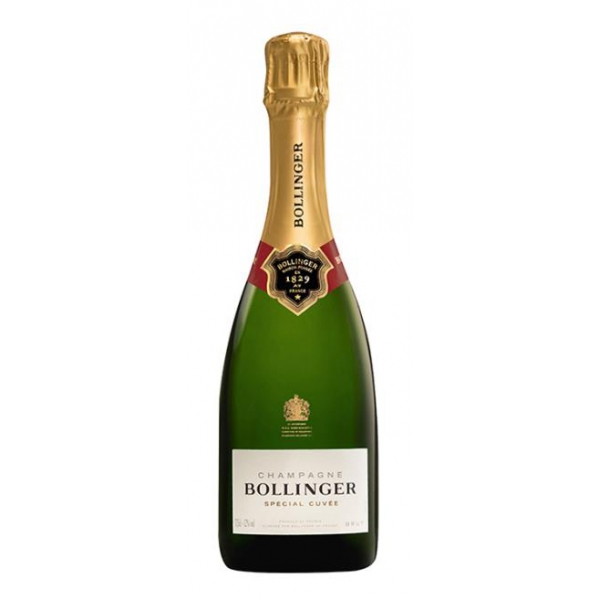No products
Categories
- Fashion Accessories
- Clothing
- Beauty & Lifestyle
-
Hi-Tech & Lifestyle
- Gaming
-
Case
- iPhone 11 Pro
- iPhone 11 Pro Max
- iPhone 11
- iPhone X / XS
- iPhone XS Max
- Samsung S10 / S10+ / S10e
- Huawei P30 / P30 Pro / P30 Lite
- Huawei P20 / P20 Pro / P20 Lite
- iPhone XR
- Samsung S9
- Samsung S9+
- iPhone 8 / 7
- iPhone 8 Plus / 7 Plus
- Samsung S8
- Samsung S8+
- Samsung S7
- Samsung S7 Edge
- iPhone 6 / 6 s
- iPhone 6 Plus / 6 s Plus
- iPhone 5 / SE
- Skin
- Audio
- Smart Home
- Drones & Hoverboard
- Photo & Video
- Desk Supplies
- Accessories
- Games
- Beverages
- Food
- Home
- Jewelry
- Luxury
- Travel
- Art
- Footwear
- Vintage Fashion
- Restaurants
- Sport
- Animals
- Gift Ideas
- Kidswear
Extra
Viewed Products
-

Clinique - Beyond Perfecting™ Foundation + Concealer - Foundation - Luxury
A foundation-and-concealer in one for...
-

Swarovski - Oval Sunglasses - Silver - Sunglasses
These eye-catching sunglasses are...
-

Prada - Prada Linea Rossa Impavid - Wraparound Sunglasses - Metallic Iron...
Sunglasses with an ultra-modern...
Bollinger Champagne
Maison Fondée en 1829

Since 1829 Bollinger had been producing great champagnes with a powerful, sophisticated and complex style.
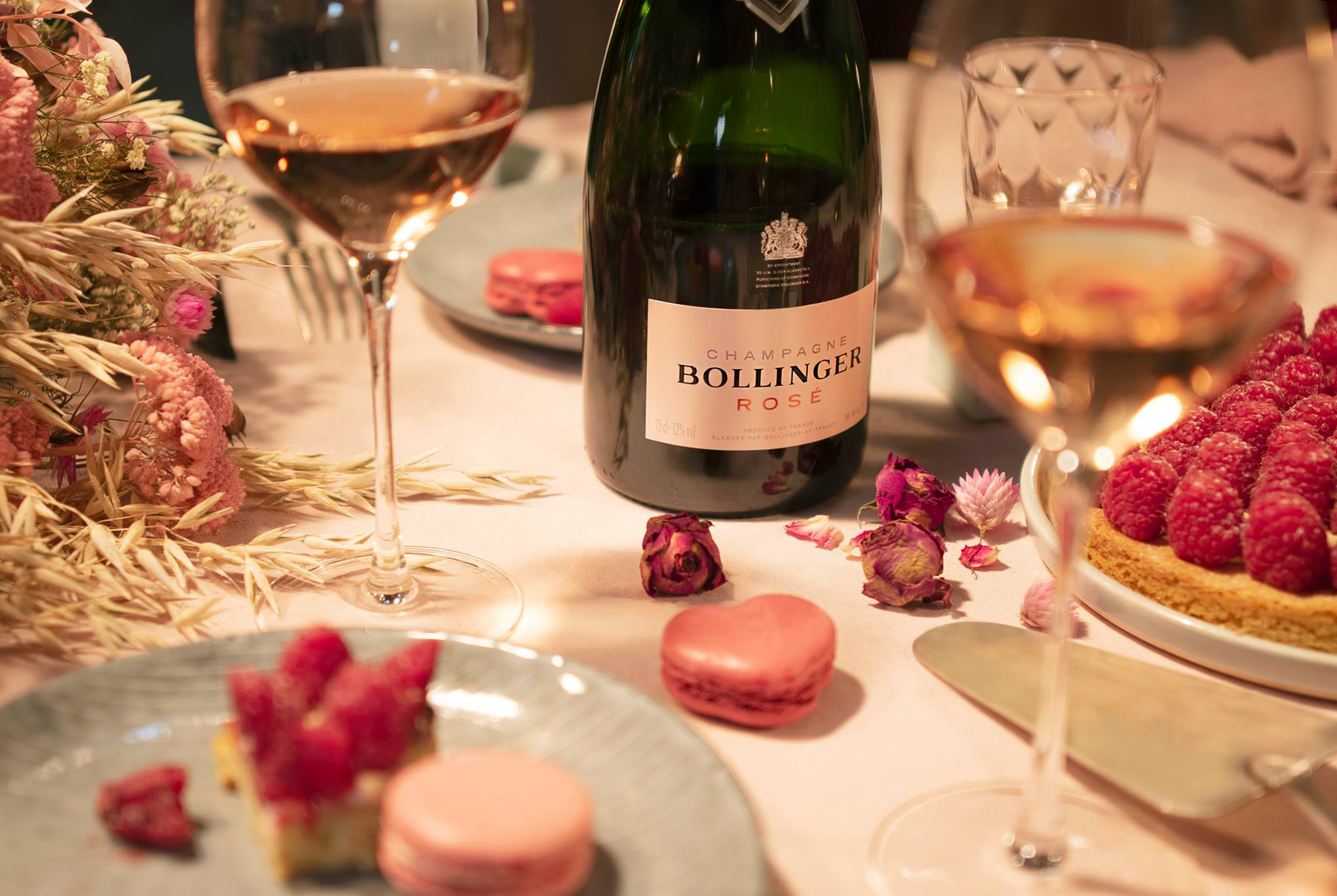
A Sophisticated Legacy - A Style

The House of Hetos - A Certain Form of Perfection
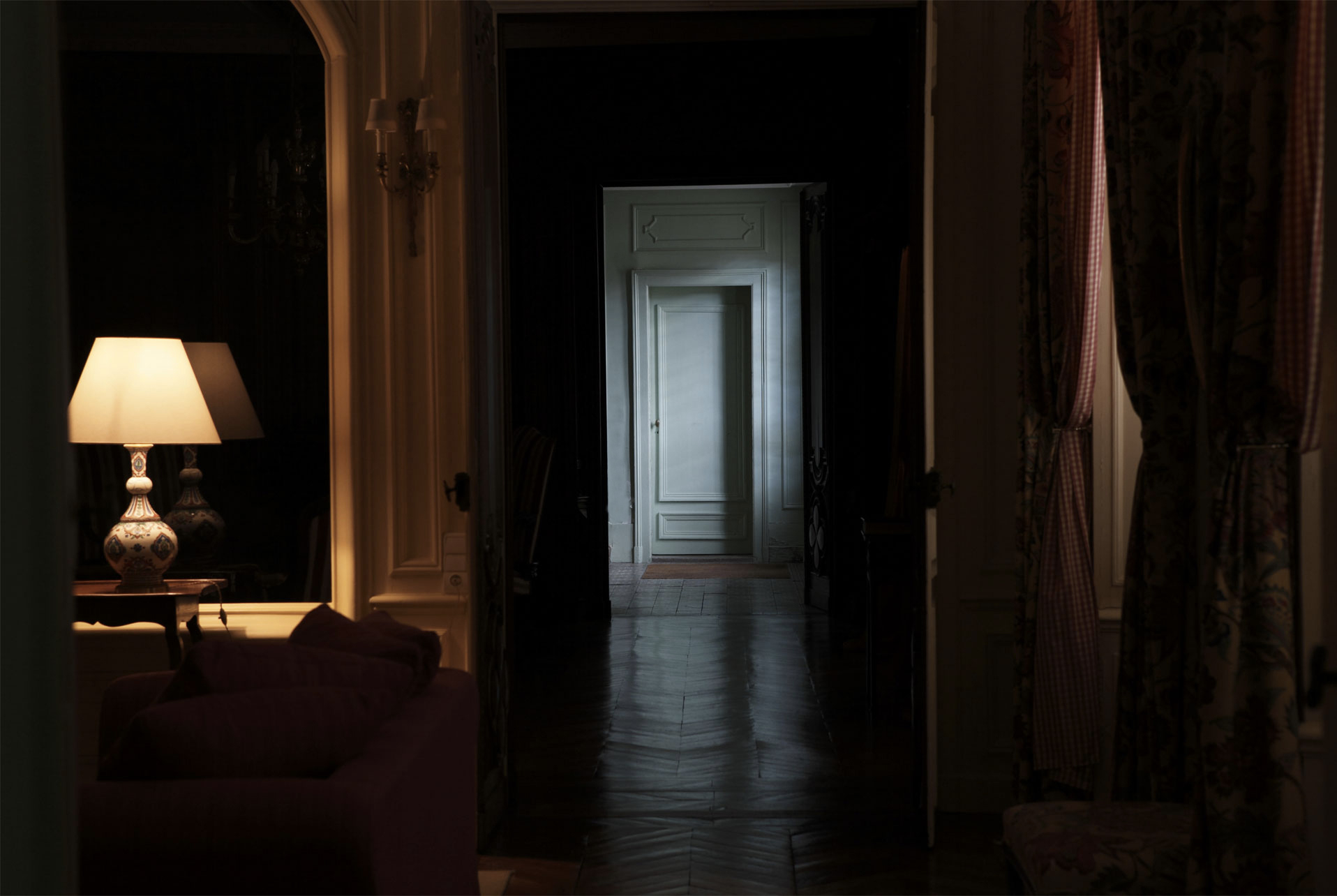
The Bollinger champagne House has created prestigious champagnes with character, distinguished by their elegance and complexity, since 1829. These outstanding wines are the result of rigorous attention to detail, for Bollinger accepts nothing less than excellence. Each and every detail represents a quest for a certain form of perfection.This uncompromisingly independent spirit, dedicated to unostentatious achievement, exemplifies the inimitable elegance for which the Champagne region is renowned and which has so impressed the Court of England that the House has been awarded the Royal Warrant since 1884.
The Essentials - The House’s Singularity
The Bollinger vineyard covers 165 hectares, most of which are classified Grand or Premier cru. Pinot Noir predominates, a demanding grape variety with an intense character which forms the backbone of the Bollinger style. Continuity of style is ensured by an exceptional collection of over 700,000 reserve magnums, making Bollinger the only champagne House with such a wide and precise palette of aromas for their blends.As a guarantee of supreme quality, the best crus are vinified in wood thanks to a stock of 3,500 small, aged casks. The House lets its wines mature for twice as long as the appellation requirement. This is not out of vanity, but because a great wine needs the luxury of time to develop its full character.
Precision in Action
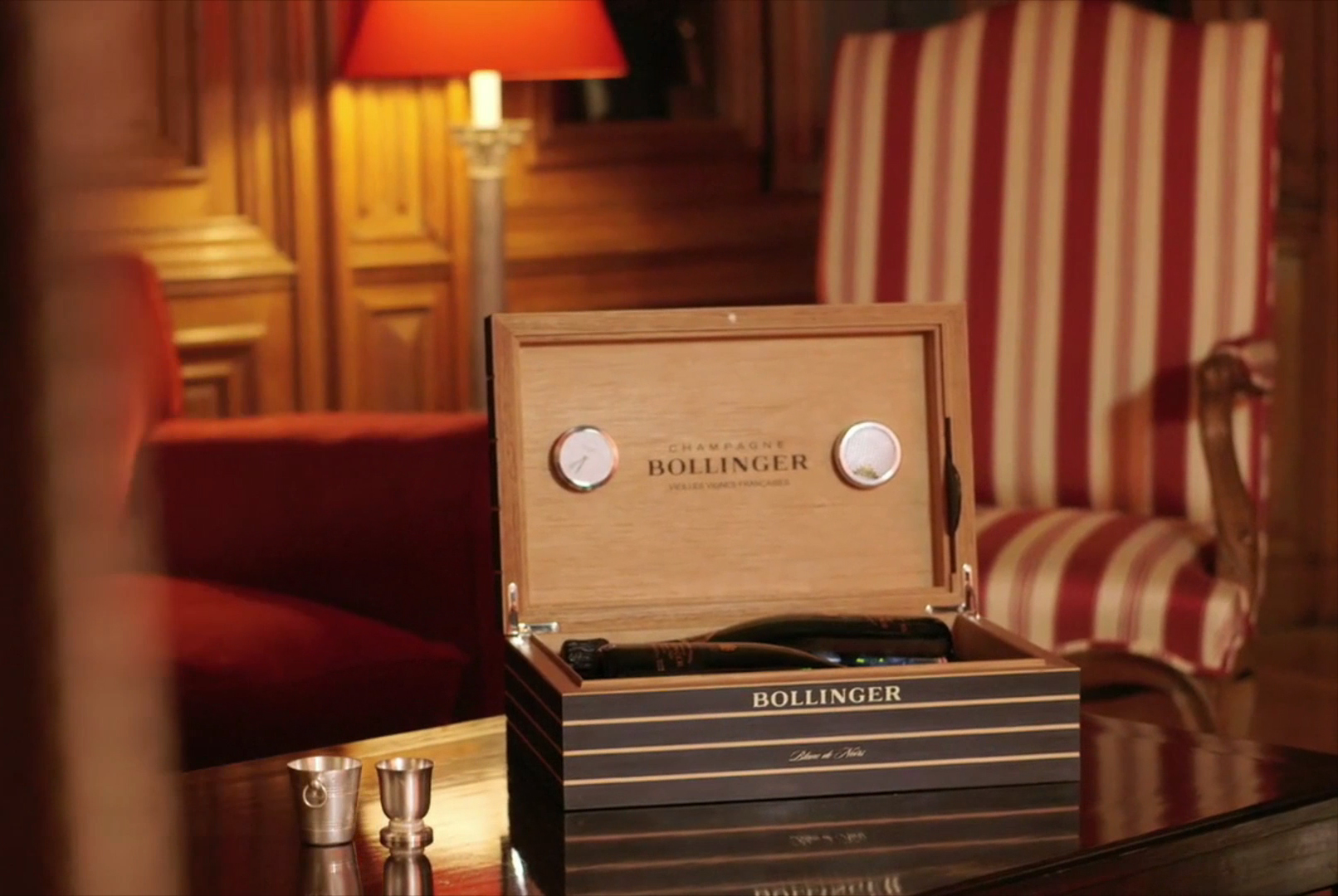
Because quality is anchored in the precision of each movement to be carried out, every stage of production of Bollinger wines is marked by a specific action. Passed on and perfected from generation to generation for nearly two centuries, these production secrets are one of the House’s greatest assets.Bollinger never yields to the easy option: wherever ancestral techniques have proved to guarantee the highest quality, they are preserved however challenging this choice might prove. Hand riddling, reserve magnums and vintage cuvées stoppered with natural corks, and a resident cooper: the House proudly perpetuates ancient skills and valuable crafts. Bollinger is the first champagne House to obtain the highly respected Patrimoine Vivant (living heritage) seal of quality which recompenses exceptional craftsmanship and skill.
A Sophisticated Legacy - A History
The Beginning - 1829: An Adventurous Aristocrat and Two Experts in Wine

The story began with Athanase de Villermont, the youngest son of a noble family with a brilliant destiny. A great soldier who shone during the American War of Independence, he inherited an extensive estate from his family in the Aÿ area. He immediately foresaw the extraordinary potential of the wines of Champagne, but as an aristocrat he was forbidden to become involved in trade. He then met Joseph Bollinger, a widely travelled German who had left his country of birth to learn about the Champagne wine trade, and Paul Renaudin, a local man who was fascinated by the world of wine. The firm of Renaudin-Bollinger & Cie was founded on 6th February 1829. Joseph took care of sales and Paul of the cellar. Athanase had founded a champagne House that was to endure through the centuries.
Succession - With Succession Came a Time of Challenges

Joseph Bollinger married Louise-Charlotte, daughter of Athanase, in 1837. In time their sons, Joseph and then Georges, took over the business. From the phylloxera crisis to the turmoil of the Great War, they were to face some of the House’s greatest challenges. Under the guidance of the two brothers, Bollinger nonetheless gained great renown and extended its vineyards considerably. In 1920 Jacques Bollinger, son of Georges, found himself at the helm of the House: a weighty burden for a 24-year old. He faced the challenge with courage, aided by his cousins Pierre and then Yves Moret de Rocheprise; for the strength of Bollinger also lies in its powerful family ties. Sophisticated, cultivated and a fluent English-speaker, Jacques increased Bollinger's prominence across the Channel. He guided the House with great wisdom through the difficult years of recession and the Second World War, and as Mayor of Aÿ he was committed to protecting his village.
Elegance - Madame Bollinger
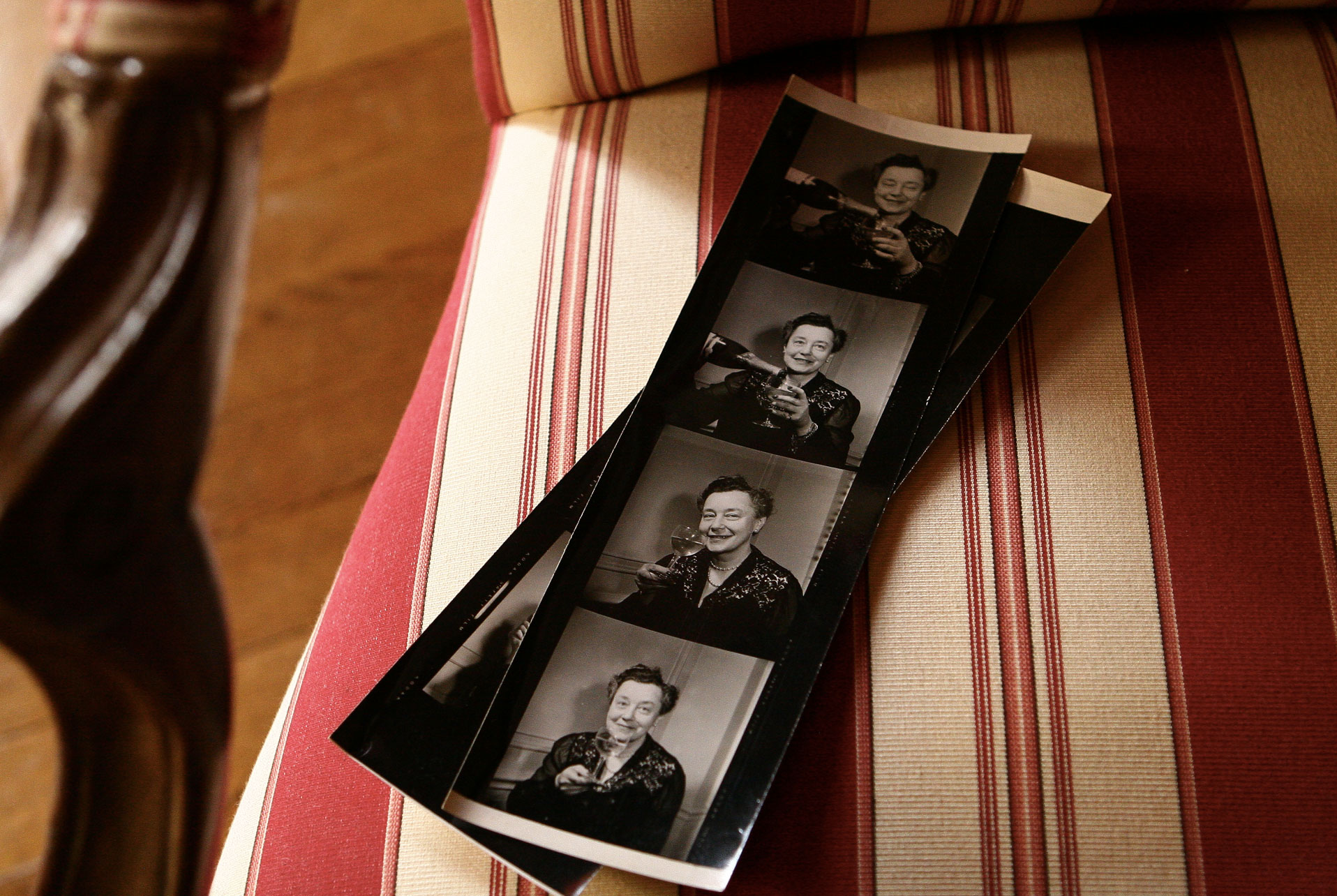
When Scotswoman Elizabeth Bollinger (born Law de Lauriston-Boubers) married Jacques in 1923, she was also to become passionately involved with the House’s destiny. She was only 42 when she lost her husband at the height of the war. Without hesitation and with great dignity she stepped in to take up the torch. "Madame Jacques”, as she was known within the House, threw herself heart and soul into her new role. During her many visits abroad her natural grace and charm worked wonders. Cheerful and witty, Madame Bollinger was nonetheless a formidable strategist. A dauntless businesswoman, she was also highly perfectionist and would tolerate nothing short of excellence. She was always ready to innovate, and was the driving force behind the highly original Bollinger R.D. cuvée. The familiar image of her cycling through the vineyards is imprinted in everyone's memories.
The Legacy - Preparing for The Future
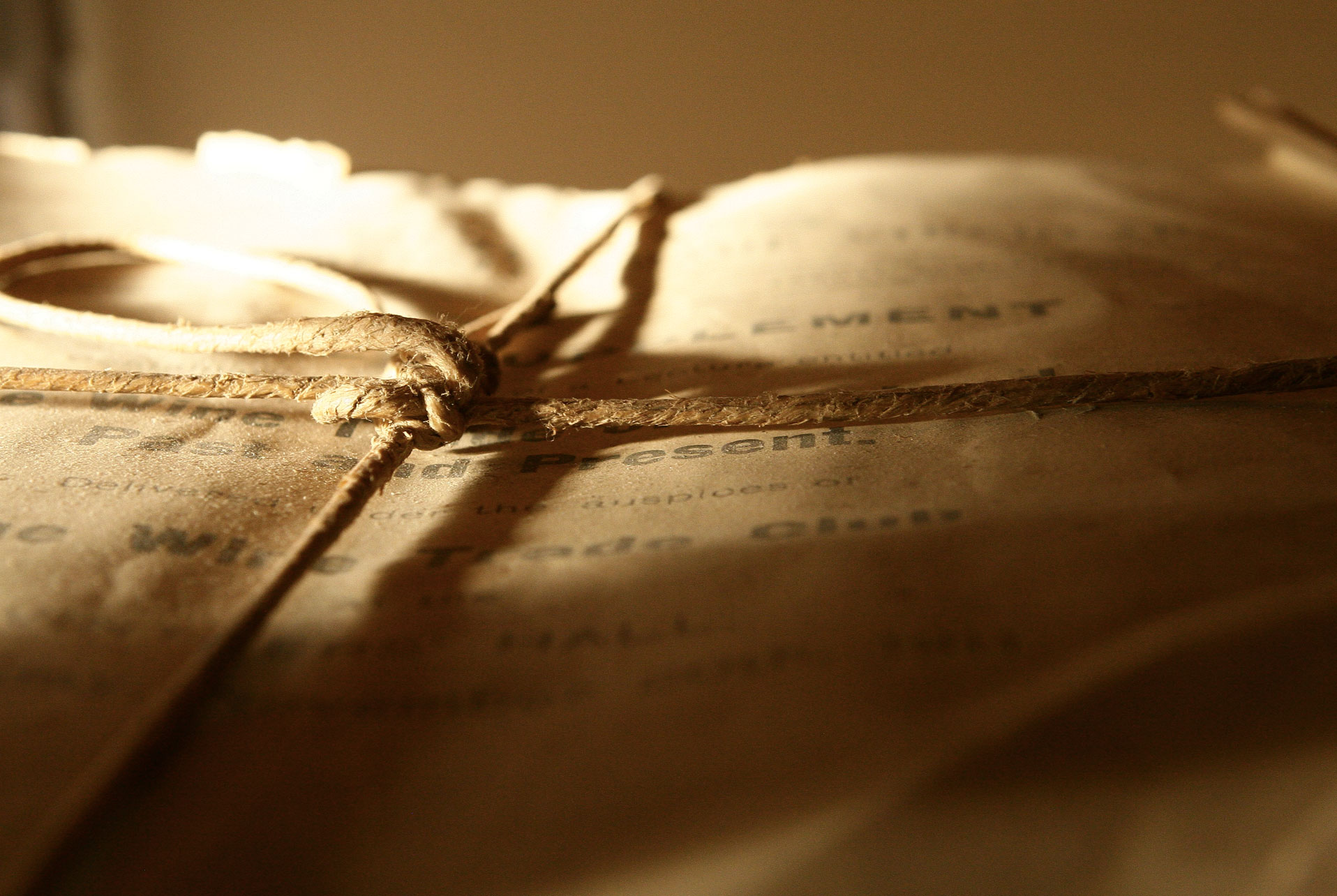
With her customary common sense, Madame Bollinger gathered around her those family members who were most able to follow in her footsteps. Firstly she taught Claude d’Hautefeuille, her niece’s husband, the ins and outs of the House. In 1950 he became a Director and launched an ambitious modernisation programme whilst respecting Bollinger’s quality requirements. Madame Bollinger appointed him Chairman in 1971 but remained closely involved until her death six years later. Madame Bollinger’s nephew, Christian Bizot, took over from Claude in 1978. A great traveller, like his Aunt Lily before him he made a point of meeting with sommeliers, restaurant owners and wine merchants to promote the House’s wines. A great Chairman, he was well known for his outspokenness and informality.
Continuity - Moving Forward in The Spirit of Tradition
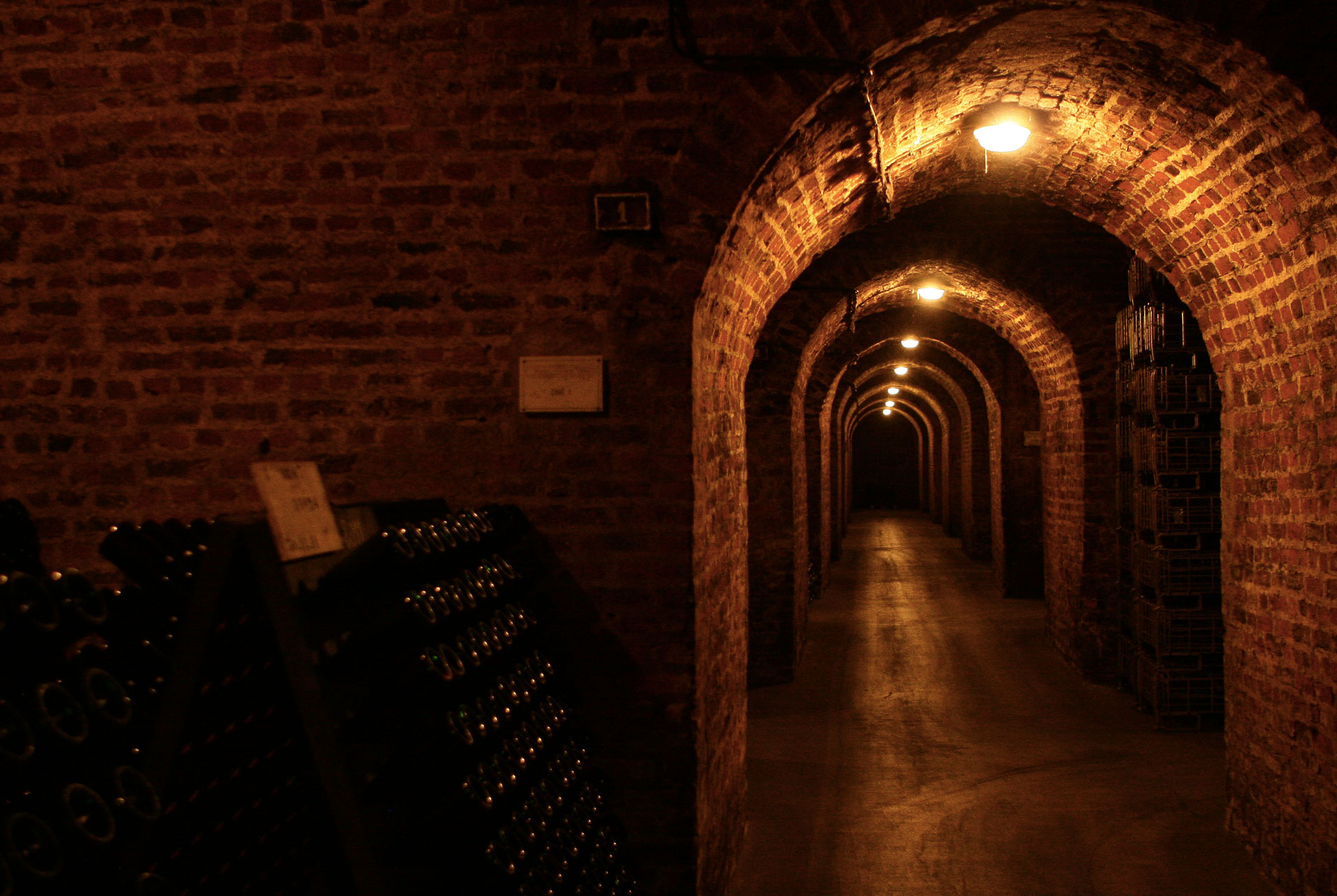
In 1994 it was none other than the great-great-grandson of founder Joseph Bollinger who was to become head of the House. After starting his career in Chili, Ghislain de Montgolfier continued to develop the House with the pursuit of excellence as a guiding light. He continues to maintain a policy of voluntarily limiting amounts produced to increase quality, while remaining true to the Bollinger spirit. A tireless worker, Ghislain has a great sense of humour and combines scientific rigour with enthusiasm for success. In 2007 his technical expertise led him to be elected as head of the Board of the Union des Maisons de Champagne and co-chairman of the Comité interprofessionnel du vin de Champagne.
The Future - The House Today and Tomorrow
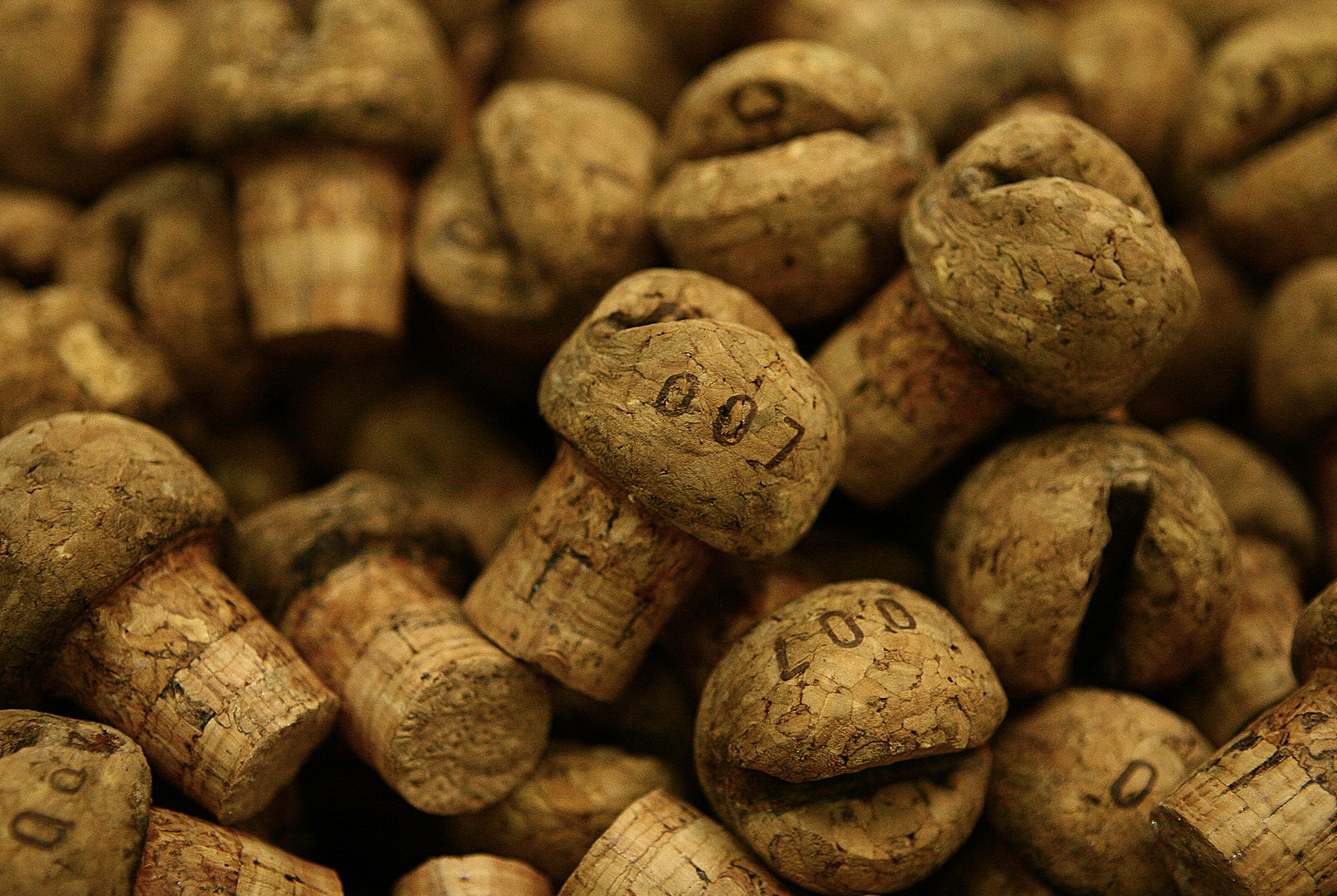
In 2008, for the first time in its history, the House placed its future into the care of a Chairman who was not a family member. Their choice fell on Jérôme Philipon, originally from the Champagne region, who had led an impressive career with large industrial groups. The choice might be unexpected - but Bollinger has never hesitated to reject conformity for the good of the House and its wines! With the Bollinger family’s support, Jérôme Philipon has extended his predecessor’s programme of modernisation and investment. With him, the House has continued to preserve its traditional expertise while incorporating the best of new technologies for the future development of the brand, both in terms of quality and commercial growth.
A Sophisticated Legacy - A World
The Family House - An Elegant and Historical Home
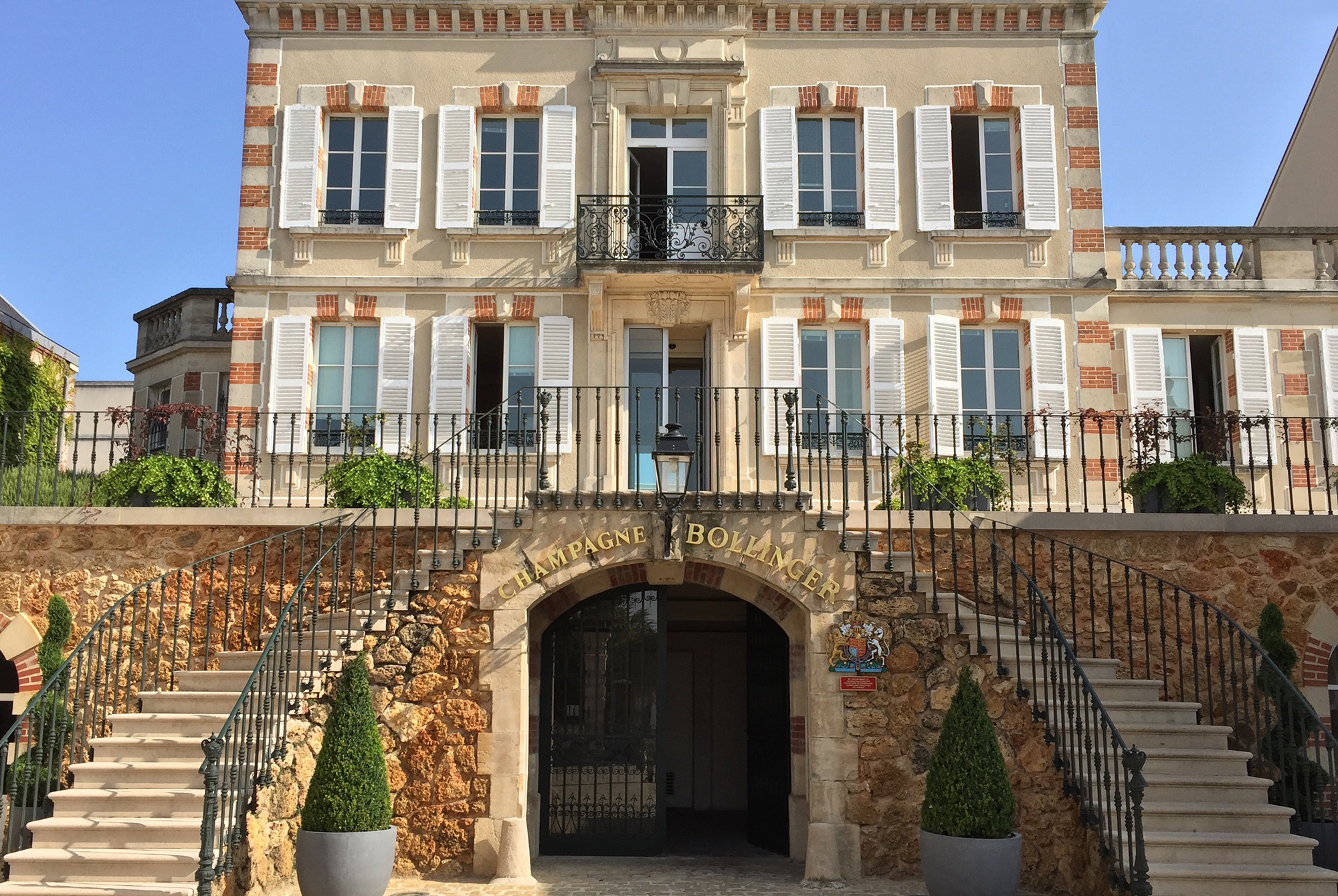
Madame Bollinger’s presence can still be felt strongly in the family home at 16, rue Jules Lobet in Aÿ. Her discreet sophistication can be detected in the refinement of each detail and the deceptively simple elegance of the house. The archive building lies on the opposite side of the courtyard. Old photographs, account books and menus with surprising combinations of food and wine are safely stored away, for Madame Bollinger kept everything with the utmost care. The garden is reached through a museum of traditional tools, where rare specimens in wood and metal bear witness to a bygone era. Beneath the garden’s venerable trees lies a secret the icehouse where food was stored in the old days. Behind high walls, sounds from the village seem to fade away to nothing; it is as if time stands still in the beauty and peace of this garden.
A Way of Life - At The Heart of The Historic Base in Aÿ
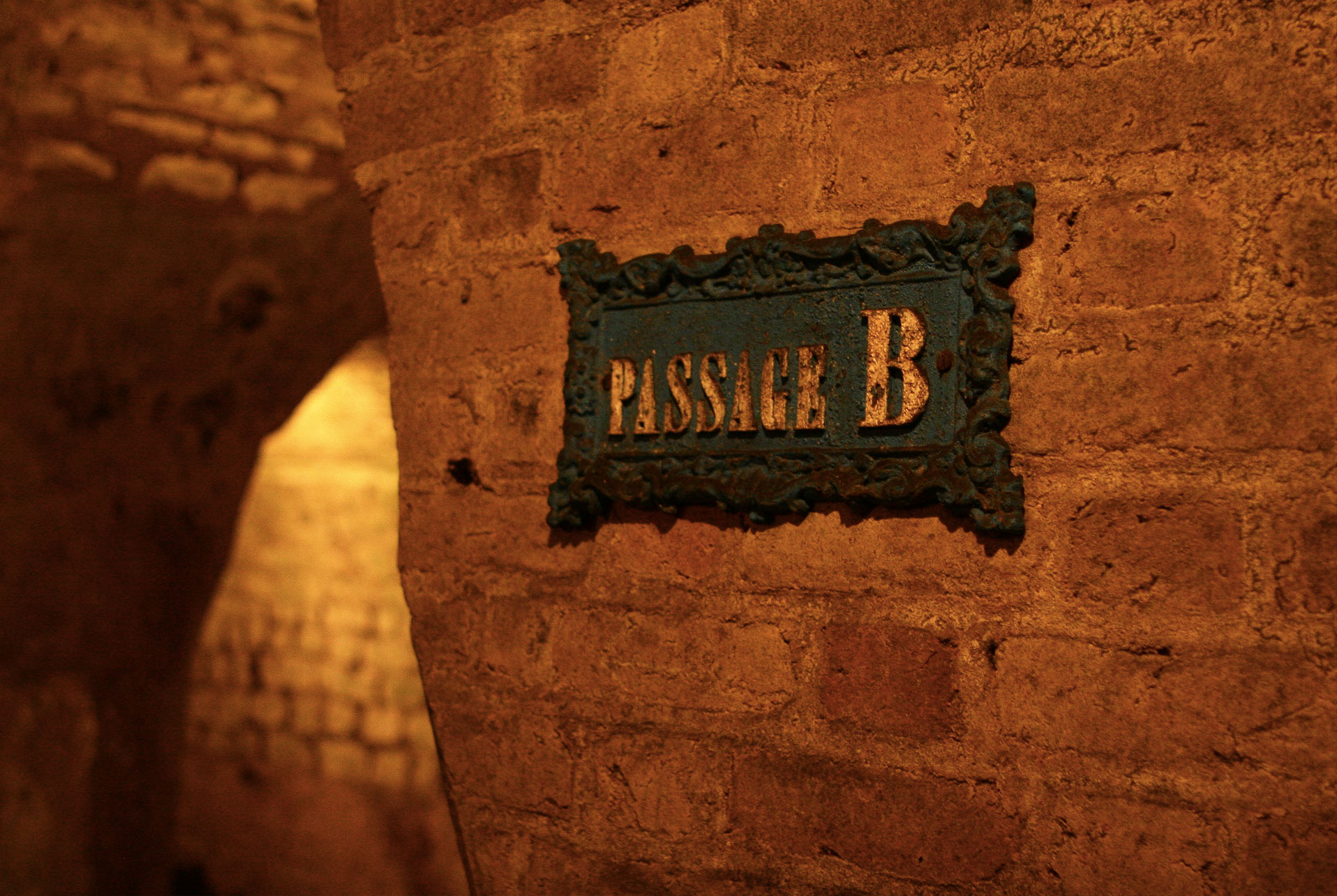
The Bollinger spirit was born here, in the lanes and alleys of Aÿ. From the courtyard where wooden barrels are left to dry, just a few steps will take you to the wine cellar where full casks are kept. Two roads further up, at the Chaudes Terres plot, is the vat-room with its gleaming thermo-regulated stainless steel vats. From it, a staircase leads to the cellar where the bottles are disgorged. This is the place where Bollinger’s whole winemaking process is centred. As soon as you open a door the sound of constant activity reaches your ears: barrels being moved, machines being operated… Even the wine does not stay completely still: the corks used to stopper the casks move during fermentation. This perpetual motion is in stark contrast with the peaceful silence of the cellars where, in the muffled coolness of age-old passages, the wine patiently waits until it is ready.
Around The World - A Long Tradition of International Prominence

A family-owned House from the heart of the Champagne wine-growing area, Bollinger is nonetheless present in over 100 countries. From the very beginning, the House has given priority to promoting its wines abroad. Bollinger’s very close relationship with England began in 1858 when Joseph Bollinger met Ludwig Mentzendorff, a wine shipper who had recently set up in London. Their strong friendship was at the root of a lasting relationship of trust which still continues today, and which has made Bollinger the most British of champagnes! Throughout the world, the House and its agents share a strong foundation of common values. Bollinger has made the challenging choice of building enduring relationships with their agents to ensure a quality distribution network.
My Name is Bond - British Elegance

The relationship between Bollinger and the British secret agent goes back to the years when the latter was an exclusively literary hero. Champagne produced by the Aÿ-based House appeared in 1956 in Ian Fleming’s fourth Bond novel, Diamonds are Forever. In 1979, as 007 pursued his adventures on the silver screen, the relationship reached a crucial turning point: Christian Bizot, Bollinger’s Chairman, met Albert R. Broccoli, producer of the James Bond saga. It was the start of a strong friendship between the two families, which was to seal the legendary association between Her Majesty’s secret agent and the champagne to which Queen Elizabeth awarded her Royal Warrant. For 007 and Bollinger, which has featured in Bond films since Live and Let Die, share a certain number of values: a passion for excellence, a sense of refinement, and consummate elegance.
The Art of Winemaking - The Vineyard
The Bollinger Estate - Bollinger’s Exceptional Vineyard
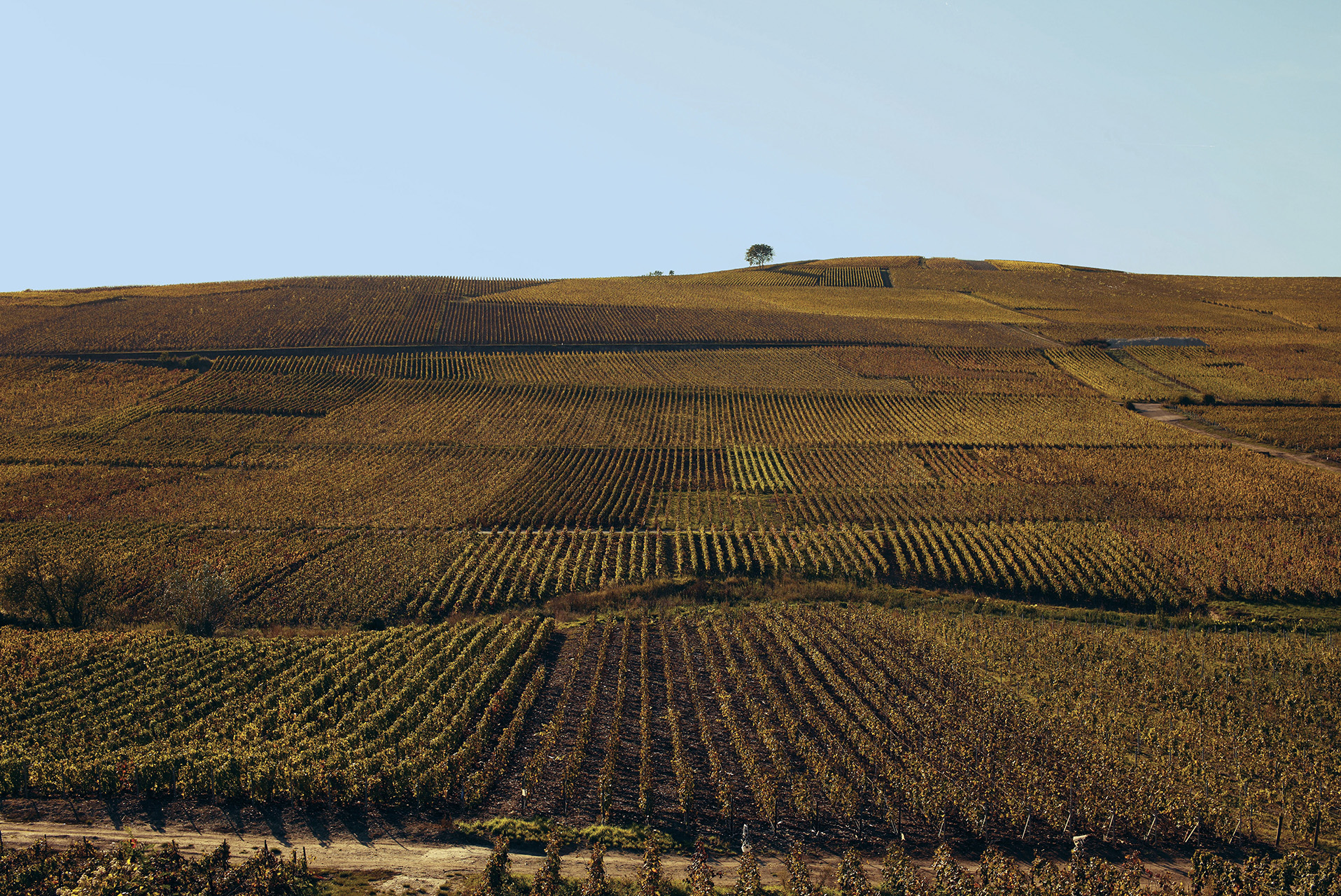
The House’s 178 hectares are planted with 85% of Grand Cru and Premier Cru vines, spread over seven main vineyards: Aÿ, Avenay, Tauxières, Louvois et Verzenay are planted with Pinot Noir, Cuis with Chardonnay and Champvoisy with Pinot Meunier. Bollinger is one of a very few champagne Houses to produce the majority of their own grapes for their blends. Pinot Noir represents 60% of the House’s vineyard, corresponding to the exact proportion of this demanding grape variety in the Special Cuvée blend. Complex and powerful, it provides Bollinger wines with their remarkable structure. Another of Bollinger’s distinctive features are two plots, the Clos Saint-Jacques and Chaudes Terres, which have never succumbed to phylloxera, the disease which ravaged almost all of the champagne wine-growing area in the early 20th century. These ungrafted vines are entirely tended by hand and reproduced using a form of layering called provignage, thereby providing the means to preserve this extraordinary heritage from which the very exclusive Vieilles Vignes Françaises cuvée is produced.
From Day to Day - Preserving and Improving The Vineyard
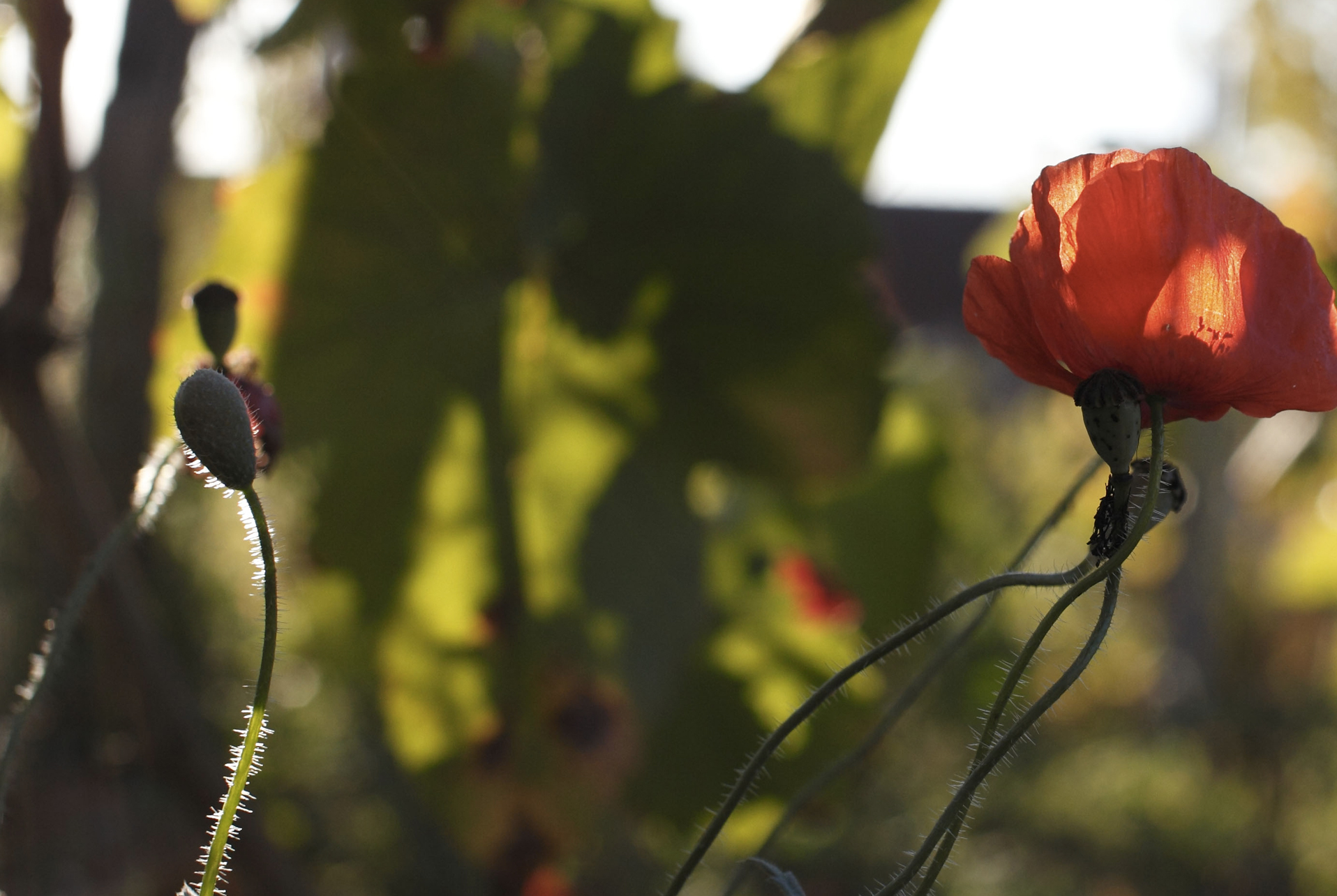
The Bollinger vines are an integral part of the geography of the Champagne region, their straight rows, which count for some of the most tightly planted in the world, creating a highly recognisable landscape. To preserve this harmony, the House constantly improves its vineyard by replacing iron stakes by pine posts, planting flowers and installing pristine boundary markers. Bollinger also supports sustainable winegrowing by grassing over the ground, using biological pest control, significantly reducing the use of herbicides and recycling pruning waste. Planting hedges and orchards helps to preserve biodiversity, while the 4 hectares of the Côte aux Enfants vineyard are managed organically. Bollinger is the first champagne House to obtain High Environmental Value certification, marking the strength of its commitment to protecting the vineyard.
The Art of Winemaking - The Professions
Cooperage - The Champagne Region’s Last Resident Cooper

Entering the Bollinger cooper’s workshop (the last resident cooper of the Champagne region) is like stepping back through time. His neatly organised tools hark back to another age. Cooperage is a highly skilled craft: each one of Bollinger’s 3,500 aged barrels, of which some are nearly 100 years old, requires great attention. Wood, like wine, is a living material, and the cooper must carefully examine each stave to repair any that look likely to cave in. When barrels are not being used they must be filled, dried and mended using traditional methods. Learning to maintain this legacy in perfect condition requires rigorous training, which is why cooperage is a craft that must be passed on to younger generations. Bollinger attaches great importance to preserving this valuable expertise.
The Cellar Master - A Spirit of Unparalleled Excellence
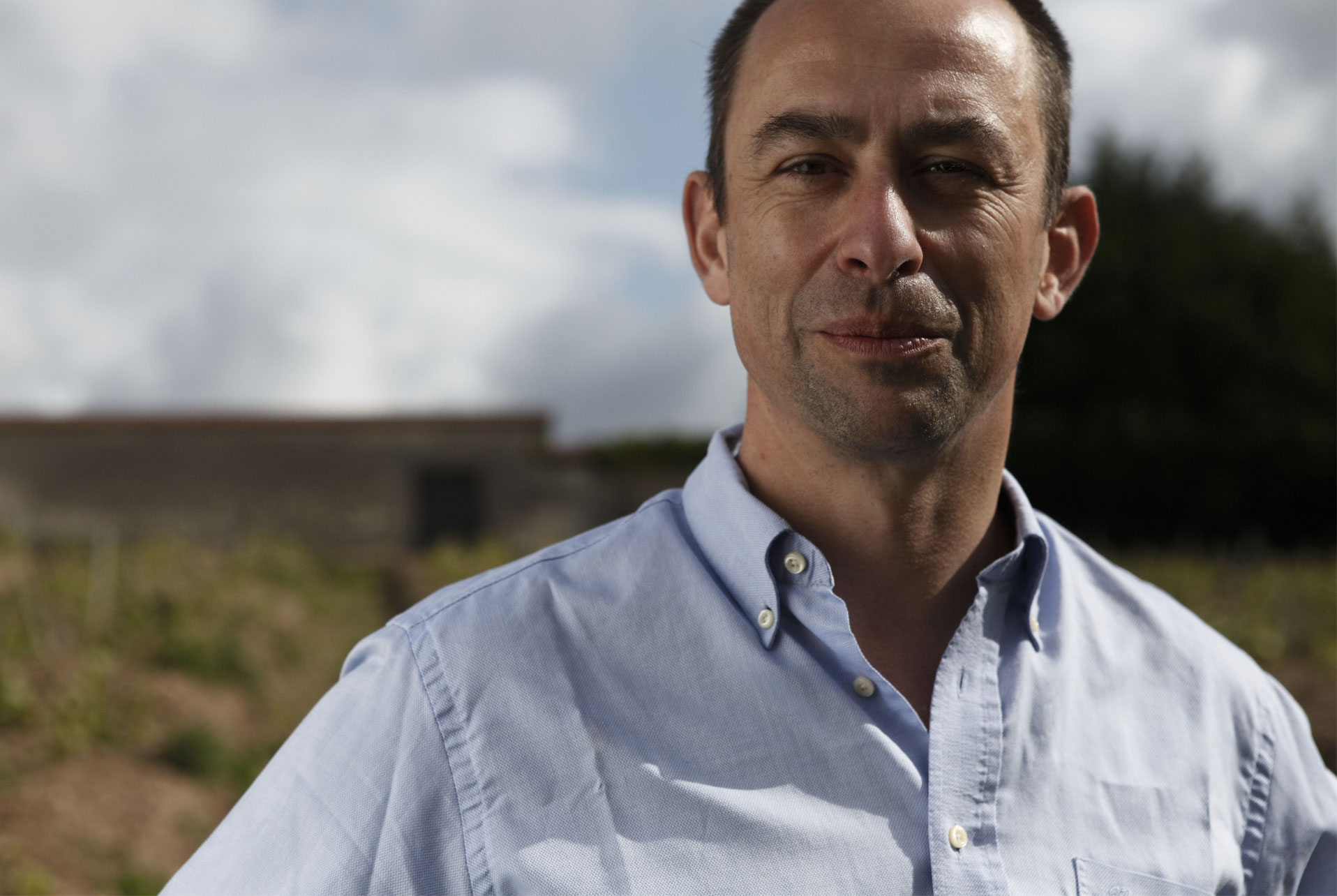
Gilles Descôtes is Bollinger’s Cellar Master. This profession requires the utmost accuracy from the moment the harvest is over he monitors the wines from each cru and each plot, getting the feel of their specific characteristics. He chooses the finest wines to be vinified in old oak casks, a practice which has almost disappeared in champagne production. The micro-oxygenation process delicately reveals the wines’ complexity and gives them an extraordinary capacity for aging. With patience and thoroughness the Cellar Master prepares each wine for the Tasting Committee when the moment comes to assemble the year’s blend. He also adds carefully preserved reserve wines, which provide an almost infinite palette of nuances and character. The Cellar Master must not simply be talented; he must also be highly intuitive in order to sense how wines will develop so that today’s blend will achieve perfection in the future.
Working The Vines - Getting The Very Best from The Vines

Bollinger’s vineyard director decides how the vines should be managed. However, each vineyard manager adapts these guidelines to his own terroir, for every plot has unique characteristics. In Aÿ, prairie flowers are planted to bloom amongst the vines, whereas in Verzenay wheat is sown. In Pinot Noir plots, destined for making red wine, priority is given to reaching optimum maturity: green harvesting techniques are always used and the grapes are harvested later. Winegrowers who provide the House with additional supplies of grapes apply the same ethic of excellence to working the vines. The maturity and health of their grapes are closely monitored. Bollinger maintains a special relationship with these winegrowers, many of whom have been faithful suppliers for several generations. The House can be absolutely sure that their grapes are produced using diligent and precise methods which guarantee the quality of the wine.
The Art of Winemaking - Time
The Aging Process - The Ultimate Luxury of Time
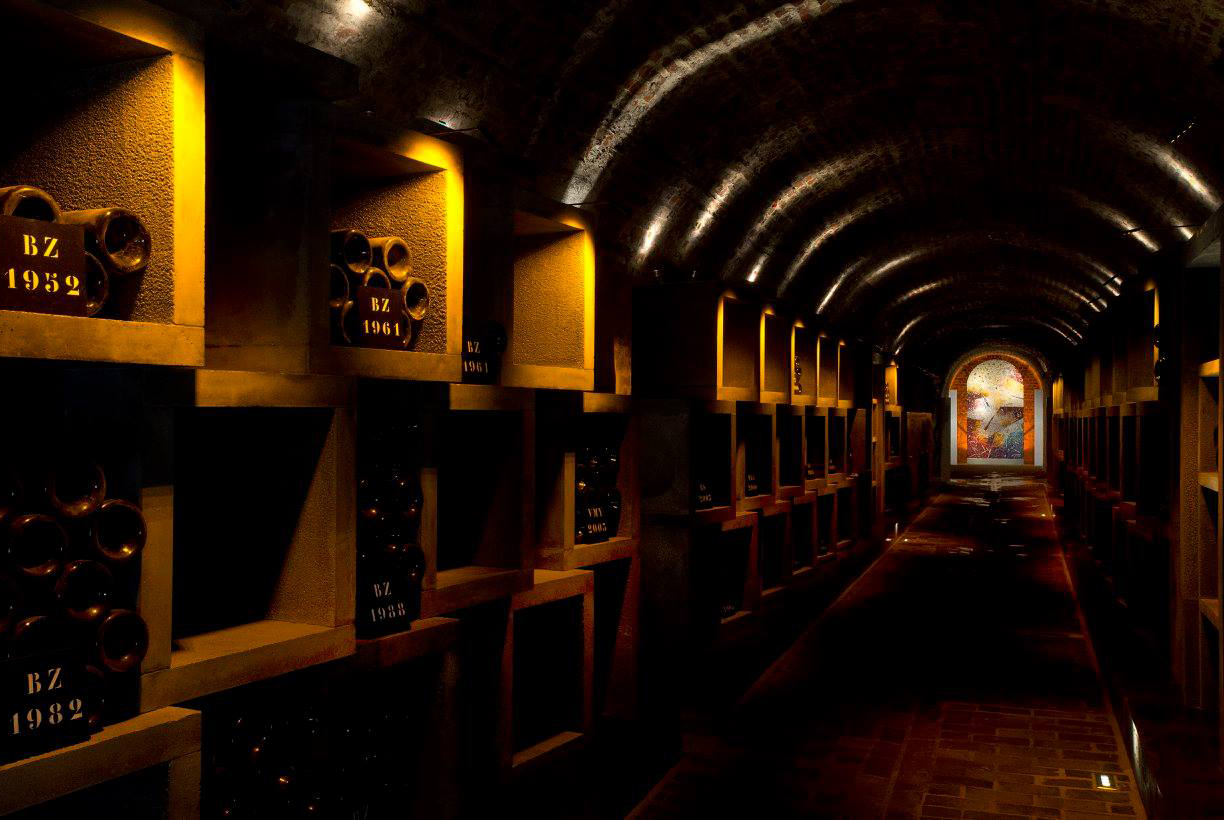
The underground world of the House’s cellars reveals the full importance of time at Bollinger’s. After primary fermentation in small stainless steel or wooden casks the wine is bottled in the spring and taken down to rest in the pervading silence of the chalk cellars; Special Cuvée champagne will remain there for at least three years and vintage cuvees for much longer. It is this long period of rest that develops the extraordinarily delicate aromas of the wine and gives the bubbles their smooth texture. Each year, some of the very best wines are added to the House’s exceptional collection of 700,000 reserve magnums which are kept for blending Special Cuvée. Stoppered with natural corks during a light secondary fermentation, these magnums enable each wine, from every cru and every plot, to reveal the infinite subtlety of their bouquet and to develop their full complexity while being protected from oxidation. This is a luxury that gives Bollinger the opportunity of letting wines mature over many years before being used. The art of using reserve wines has reached absolute perfection!
The Pursuit of Perfection - The Final Steps

Bollinger’s pursuit of excellence does not stop with the winemaking process. Riddling and disgorging of all vintage wines, with their natural cork stoppers, is still carried out by hand. The House has always striven to keep the natural balance of its wines and adds very little extra sugar. Bollinger is also uncompromising in its choice to allow bottles to rest for three months after disgorging to give the wine all the time it needs to stabilize. The finishing touch is given in a brand new building at Oger, set in the Côte des Blancs vineyards, where modern technology and perfection go hand in hand. Here, amidst the bustle of machinery, the bottles are at last clad in the House colours. Labelled and packaged, they are finally ready to be shipped to clients the world over.
Vintage Champagne - A Very Special Meaning
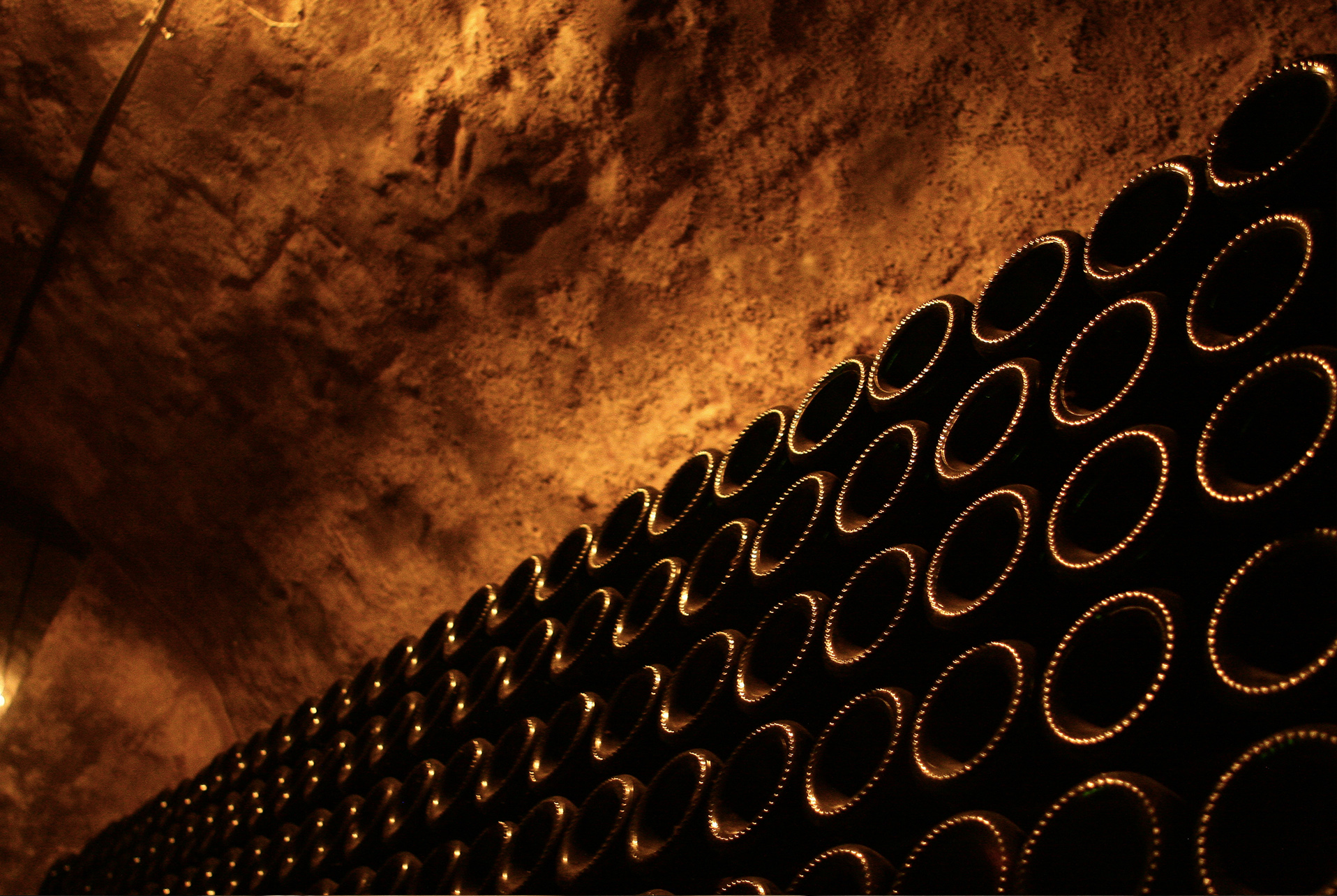
Bollinger does not seek to produce vintage cuvées at all costs. It is only done when a grape harvest turns out to be absolutely exceptional: grapes must be perfectly ripe and present an ideal balance between sugar and acids. The House’s uncompromising commitment to according vintage status to only the very best of years has given rise to the name of this outstanding cuvée. La Grande Année and La Grande Année Rosé, the House’s prestige cuvees, are cogent demonstrations of a vintage year’s extraordinary qualities. Vinified exclusively in casks, they illustrate Bollinger’s interpretation of a grape harvest. The outstanding Bollinger R.D. cuvée takes these vintages to an even higher level with a remarkably long period of aging on lees. This is a champagne that truly demonstrates the advantages of the passing years.
A Perfect Moment

Since 1829, Champagne Bollinger has cultivated its singularity by combining savoir-faire and modernity. In keeping with this philosophy, the House continues its innovative tradition by bringing its “Life Can Be Perfect” promise to life.
On March 20th, 2015 a total solar eclipse will take place, visible in its entirety from only a single spot on Earth: Norway’s Spitzbergen region. To celebrate this exceptional phenomenon, Bollinger is offering you an extraordinary opportunity to live “A Perfect Moment”. Aboard a privatised Falcon 7X, capable of flying above the clouds in the stratosphere at an altitude of 14,935 meters, our lucky contest winner will have the privilege of experiencing this sensational show up close. Accompanied by Jérôme Philipon, President of the House, the winner will have the privilege of being one of the first to sample the new vintage of La Grande Année.
Products Bollinger Champagne
Bollinger Champagne
Maison Fondée en 1829

Since 1829 Bollinger had been producing great champagnes with a powerful, sophisticated and complex style.

A Sophisticated Legacy - A Style

The House of Hetos - A Certain Form of Perfection

The Bollinger champagne House has created prestigious champagnes with character, distinguished by their elegance and complexity, since 1829. These outstanding wines are the result of rigorous attention to detail, for Bollinger accepts nothing less than excellence. Each and every detail represents a quest for a certain form of perfection.This uncompromisingly independent spirit, dedicated to unostentatious achievement, exemplifies the inimitable elegance for which the Champagne region is renowned and which has so impressed the Court of England that the House has been awarded the Royal Warrant since 1884.
The Essentials - The House’s Singularity
The Bollinger vineyard covers 165 hectares, most of which are classified Grand or Premier cru. Pinot Noir predominates, a demanding grape variety with an intense character which forms the backbone of the Bollinger style. Continuity of style is ensured by an exceptional collection of over 700,000 reserve magnums, making Bollinger the only champagne House with such a wide and precise palette of aromas for their blends.As a guarantee of supreme quality, the best crus are vinified in wood thanks to a stock of 3,500 small, aged casks. The House lets its wines mature for twice as long as the appellation requirement. This is not out of vanity, but because a great wine needs the luxury of time to develop its full character.
Precision in Action

Because quality is anchored in the precision of each movement to be carried out, every stage of production of Bollinger wines is marked by a specific action. Passed on and perfected from generation to generation for nearly two centuries, these production secrets are one of the House’s greatest assets.Bollinger never yields to the easy option: wherever ancestral techniques have proved to guarantee the highest quality, they are preserved however challenging this choice might prove. Hand riddling, reserve magnums and vintage cuvées stoppered with natural corks, and a resident cooper: the House proudly perpetuates ancient skills and valuable crafts. Bollinger is the first champagne House to obtain the highly respected Patrimoine Vivant (living heritage) seal of quality which recompenses exceptional craftsmanship and skill.
A Sophisticated Legacy - A History
The Beginning - 1829: An Adventurous Aristocrat and Two Experts in Wine

The story began with Athanase de Villermont, the youngest son of a noble family with a brilliant destiny. A great soldier who shone during the American War of Independence, he inherited an extensive estate from his family in the Aÿ area. He immediately foresaw the extraordinary potential of the wines of Champagne, but as an aristocrat he was forbidden to become involved in trade. He then met Joseph Bollinger, a widely travelled German who had left his country of birth to learn about the Champagne wine trade, and Paul Renaudin, a local man who was fascinated by the world of wine. The firm of Renaudin-Bollinger & Cie was founded on 6th February 1829. Joseph took care of sales and Paul of the cellar. Athanase had founded a champagne House that was to endure through the centuries.
Succession - With Succession Came a Time of Challenges

Joseph Bollinger married Louise-Charlotte, daughter of Athanase, in 1837. In time their sons, Joseph and then Georges, took over the business. From the phylloxera crisis to the turmoil of the Great War, they were to face some of the House’s greatest challenges. Under the guidance of the two brothers, Bollinger nonetheless gained great renown and extended its vineyards considerably. In 1920 Jacques Bollinger, son of Georges, found himself at the helm of the House: a weighty burden for a 24-year old. He faced the challenge with courage, aided by his cousins Pierre and then Yves Moret de Rocheprise; for the strength of Bollinger also lies in its powerful family ties. Sophisticated, cultivated and a fluent English-speaker, Jacques increased Bollinger's prominence across the Channel. He guided the House with great wisdom through the difficult years of recession and the Second World War, and as Mayor of Aÿ he was committed to protecting his village.
Elegance - Madame Bollinger

When Scotswoman Elizabeth Bollinger (born Law de Lauriston-Boubers) married Jacques in 1923, she was also to become passionately involved with the House’s destiny. She was only 42 when she lost her husband at the height of the war. Without hesitation and with great dignity she stepped in to take up the torch. "Madame Jacques”, as she was known within the House, threw herself heart and soul into her new role. During her many visits abroad her natural grace and charm worked wonders. Cheerful and witty, Madame Bollinger was nonetheless a formidable strategist. A dauntless businesswoman, she was also highly perfectionist and would tolerate nothing short of excellence. She was always ready to innovate, and was the driving force behind the highly original Bollinger R.D. cuvée. The familiar image of her cycling through the vineyards is imprinted in everyone's memories.
The Legacy - Preparing for The Future

With her customary common sense, Madame Bollinger gathered around her those family members who were most able to follow in her footsteps. Firstly she taught Claude d’Hautefeuille, her niece’s husband, the ins and outs of the House. In 1950 he became a Director and launched an ambitious modernisation programme whilst respecting Bollinger’s quality requirements. Madame Bollinger appointed him Chairman in 1971 but remained closely involved until her death six years later. Madame Bollinger’s nephew, Christian Bizot, took over from Claude in 1978. A great traveller, like his Aunt Lily before him he made a point of meeting with sommeliers, restaurant owners and wine merchants to promote the House’s wines. A great Chairman, he was well known for his outspokenness and informality.
Continuity - Moving Forward in The Spirit of Tradition

In 1994 it was none other than the great-great-grandson of founder Joseph Bollinger who was to become head of the House. After starting his career in Chili, Ghislain de Montgolfier continued to develop the House with the pursuit of excellence as a guiding light. He continues to maintain a policy of voluntarily limiting amounts produced to increase quality, while remaining true to the Bollinger spirit. A tireless worker, Ghislain has a great sense of humour and combines scientific rigour with enthusiasm for success. In 2007 his technical expertise led him to be elected as head of the Board of the Union des Maisons de Champagne and co-chairman of the Comité interprofessionnel du vin de Champagne.
The Future - The House Today and Tomorrow

In 2008, for the first time in its history, the House placed its future into the care of a Chairman who was not a family member. Their choice fell on Jérôme Philipon, originally from the Champagne region, who had led an impressive career with large industrial groups. The choice might be unexpected - but Bollinger has never hesitated to reject conformity for the good of the House and its wines! With the Bollinger family’s support, Jérôme Philipon has extended his predecessor’s programme of modernisation and investment. With him, the House has continued to preserve its traditional expertise while incorporating the best of new technologies for the future development of the brand, both in terms of quality and commercial growth.
A Sophisticated Legacy - A World
The Family House - An Elegant and Historical Home

Madame Bollinger’s presence can still be felt strongly in the family home at 16, rue Jules Lobet in Aÿ. Her discreet sophistication can be detected in the refinement of each detail and the deceptively simple elegance of the house. The archive building lies on the opposite side of the courtyard. Old photographs, account books and menus with surprising combinations of food and wine are safely stored away, for Madame Bollinger kept everything with the utmost care. The garden is reached through a museum of traditional tools, where rare specimens in wood and metal bear witness to a bygone era. Beneath the garden’s venerable trees lies a secret the icehouse where food was stored in the old days. Behind high walls, sounds from the village seem to fade away to nothing; it is as if time stands still in the beauty and peace of this garden.
A Way of Life - At The Heart of The Historic Base in Aÿ

The Bollinger spirit was born here, in the lanes and alleys of Aÿ. From the courtyard where wooden barrels are left to dry, just a few steps will take you to the wine cellar where full casks are kept. Two roads further up, at the Chaudes Terres plot, is the vat-room with its gleaming thermo-regulated stainless steel vats. From it, a staircase leads to the cellar where the bottles are disgorged. This is the place where Bollinger’s whole winemaking process is centred. As soon as you open a door the sound of constant activity reaches your ears: barrels being moved, machines being operated… Even the wine does not stay completely still: the corks used to stopper the casks move during fermentation. This perpetual motion is in stark contrast with the peaceful silence of the cellars where, in the muffled coolness of age-old passages, the wine patiently waits until it is ready.
Around The World - A Long Tradition of International Prominence

A family-owned House from the heart of the Champagne wine-growing area, Bollinger is nonetheless present in over 100 countries. From the very beginning, the House has given priority to promoting its wines abroad. Bollinger’s very close relationship with England began in 1858 when Joseph Bollinger met Ludwig Mentzendorff, a wine shipper who had recently set up in London. Their strong friendship was at the root of a lasting relationship of trust which still continues today, and which has made Bollinger the most British of champagnes! Throughout the world, the House and its agents share a strong foundation of common values. Bollinger has made the challenging choice of building enduring relationships with their agents to ensure a quality distribution network.
My Name is Bond - British Elegance

The relationship between Bollinger and the British secret agent goes back to the years when the latter was an exclusively literary hero. Champagne produced by the Aÿ-based House appeared in 1956 in Ian Fleming’s fourth Bond novel, Diamonds are Forever. In 1979, as 007 pursued his adventures on the silver screen, the relationship reached a crucial turning point: Christian Bizot, Bollinger’s Chairman, met Albert R. Broccoli, producer of the James Bond saga. It was the start of a strong friendship between the two families, which was to seal the legendary association between Her Majesty’s secret agent and the champagne to which Queen Elizabeth awarded her Royal Warrant. For 007 and Bollinger, which has featured in Bond films since Live and Let Die, share a certain number of values: a passion for excellence, a sense of refinement, and consummate elegance.
The Art of Winemaking - The Vineyard
The Bollinger Estate - Bollinger’s Exceptional Vineyard

The House’s 178 hectares are planted with 85% of Grand Cru and Premier Cru vines, spread over seven main vineyards: Aÿ, Avenay, Tauxières, Louvois et Verzenay are planted with Pinot Noir, Cuis with Chardonnay and Champvoisy with Pinot Meunier. Bollinger is one of a very few champagne Houses to produce the majority of their own grapes for their blends. Pinot Noir represents 60% of the House’s vineyard, corresponding to the exact proportion of this demanding grape variety in the Special Cuvée blend. Complex and powerful, it provides Bollinger wines with their remarkable structure. Another of Bollinger’s distinctive features are two plots, the Clos Saint-Jacques and Chaudes Terres, which have never succumbed to phylloxera, the disease which ravaged almost all of the champagne wine-growing area in the early 20th century. These ungrafted vines are entirely tended by hand and reproduced using a form of layering called provignage, thereby providing the means to preserve this extraordinary heritage from which the very exclusive Vieilles Vignes Françaises cuvée is produced.
From Day to Day - Preserving and Improving The Vineyard

The Bollinger vines are an integral part of the geography of the Champagne region, their straight rows, which count for some of the most tightly planted in the world, creating a highly recognisable landscape. To preserve this harmony, the House constantly improves its vineyard by replacing iron stakes by pine posts, planting flowers and installing pristine boundary markers. Bollinger also supports sustainable winegrowing by grassing over the ground, using biological pest control, significantly reducing the use of herbicides and recycling pruning waste. Planting hedges and orchards helps to preserve biodiversity, while the 4 hectares of the Côte aux Enfants vineyard are managed organically. Bollinger is the first champagne House to obtain High Environmental Value certification, marking the strength of its commitment to protecting the vineyard.
The Art of Winemaking - The Professions
Cooperage - The Champagne Region’s Last Resident Cooper

Entering the Bollinger cooper’s workshop (the last resident cooper of the Champagne region) is like stepping back through time. His neatly organised tools hark back to another age. Cooperage is a highly skilled craft: each one of Bollinger’s 3,500 aged barrels, of which some are nearly 100 years old, requires great attention. Wood, like wine, is a living material, and the cooper must carefully examine each stave to repair any that look likely to cave in. When barrels are not being used they must be filled, dried and mended using traditional methods. Learning to maintain this legacy in perfect condition requires rigorous training, which is why cooperage is a craft that must be passed on to younger generations. Bollinger attaches great importance to preserving this valuable expertise.
The Cellar Master - A Spirit of Unparalleled Excellence

Gilles Descôtes is Bollinger’s Cellar Master. This profession requires the utmost accuracy from the moment the harvest is over he monitors the wines from each cru and each plot, getting the feel of their specific characteristics. He chooses the finest wines to be vinified in old oak casks, a practice which has almost disappeared in champagne production. The micro-oxygenation process delicately reveals the wines’ complexity and gives them an extraordinary capacity for aging. With patience and thoroughness the Cellar Master prepares each wine for the Tasting Committee when the moment comes to assemble the year’s blend. He also adds carefully preserved reserve wines, which provide an almost infinite palette of nuances and character. The Cellar Master must not simply be talented; he must also be highly intuitive in order to sense how wines will develop so that today’s blend will achieve perfection in the future.
Working The Vines - Getting The Very Best from The Vines

Bollinger’s vineyard director decides how the vines should be managed. However, each vineyard manager adapts these guidelines to his own terroir, for every plot has unique characteristics. In Aÿ, prairie flowers are planted to bloom amongst the vines, whereas in Verzenay wheat is sown. In Pinot Noir plots, destined for making red wine, priority is given to reaching optimum maturity: green harvesting techniques are always used and the grapes are harvested later. Winegrowers who provide the House with additional supplies of grapes apply the same ethic of excellence to working the vines. The maturity and health of their grapes are closely monitored. Bollinger maintains a special relationship with these winegrowers, many of whom have been faithful suppliers for several generations. The House can be absolutely sure that their grapes are produced using diligent and precise methods which guarantee the quality of the wine.
The Art of Winemaking - Time
The Aging Process - The Ultimate Luxury of Time

The underground world of the House’s cellars reveals the full importance of time at Bollinger’s. After primary fermentation in small stainless steel or wooden casks the wine is bottled in the spring and taken down to rest in the pervading silence of the chalk cellars; Special Cuvée champagne will remain there for at least three years and vintage cuvees for much longer. It is this long period of rest that develops the extraordinarily delicate aromas of the wine and gives the bubbles their smooth texture. Each year, some of the very best wines are added to the House’s exceptional collection of 700,000 reserve magnums which are kept for blending Special Cuvée. Stoppered with natural corks during a light secondary fermentation, these magnums enable each wine, from every cru and every plot, to reveal the infinite subtlety of their bouquet and to develop their full complexity while being protected from oxidation. This is a luxury that gives Bollinger the opportunity of letting wines mature over many years before being used. The art of using reserve wines has reached absolute perfection!
The Pursuit of Perfection - The Final Steps

Bollinger’s pursuit of excellence does not stop with the winemaking process. Riddling and disgorging of all vintage wines, with their natural cork stoppers, is still carried out by hand. The House has always striven to keep the natural balance of its wines and adds very little extra sugar. Bollinger is also uncompromising in its choice to allow bottles to rest for three months after disgorging to give the wine all the time it needs to stabilize. The finishing touch is given in a brand new building at Oger, set in the Côte des Blancs vineyards, where modern technology and perfection go hand in hand. Here, amidst the bustle of machinery, the bottles are at last clad in the House colours. Labelled and packaged, they are finally ready to be shipped to clients the world over.
Vintage Champagne - A Very Special Meaning

Bollinger does not seek to produce vintage cuvées at all costs. It is only done when a grape harvest turns out to be absolutely exceptional: grapes must be perfectly ripe and present an ideal balance between sugar and acids. The House’s uncompromising commitment to according vintage status to only the very best of years has given rise to the name of this outstanding cuvée. La Grande Année and La Grande Année Rosé, the House’s prestige cuvees, are cogent demonstrations of a vintage year’s extraordinary qualities. Vinified exclusively in casks, they illustrate Bollinger’s interpretation of a grape harvest. The outstanding Bollinger R.D. cuvée takes these vintages to an even higher level with a remarkably long period of aging on lees. This is a champagne that truly demonstrates the advantages of the passing years.
A Perfect Moment

Since 1829, Champagne Bollinger has cultivated its singularity by combining savoir-faire and modernity. In keeping with this philosophy, the House continues its innovative tradition by bringing its “Life Can Be Perfect” promise to life.
On March 20th, 2015 a total solar eclipse will take place, visible in its entirety from only a single spot on Earth: Norway’s Spitzbergen region. To celebrate this exceptional phenomenon, Bollinger is offering you an extraordinary opportunity to live “A Perfect Moment”. Aboard a privatised Falcon 7X, capable of flying above the clouds in the stratosphere at an altitude of 14,935 meters, our lucky contest winner will have the privilege of experiencing this sensational show up close. Accompanied by Jérôme Philipon, President of the House, the winner will have the privilege of being one of the first to sample the new vintage of La Grande Année.
Products Bollinger Champagne
- 1
- 2
-
Bollinger Champagne - Bollinger Rosè Champagne - Box - Pinot Noir - Luxury...
Bronze reflections conjugation of the intense depth of the great red wine used in the cuvée.
73,00 € -
Bollinger Champagne - Special Cuvée Champagne - Box - Pinot Noir - Luxury...
A golden robe, the hallmark of dark grape varieties. Very fine perlage.
57,00 € -
Bollinger Champagne - Bollinger Rosè Champagne - Pinot Noir - Luxury Limited...
Bronze reflections conjugation of the intense depth of the great red wine used in the cuvée.
69,00 € -
Bollinger Champagne - Special Cuvée Champagne - Pinot Noir - Luxury Limited...
A golden robe, the hallmark of dark grape varieties. Very fine perlage.
55,00 € -
Bollinger Champagne - Special Cuvée Champagne - Pinot Noir - Luxury Limited...
A beautiful garnet-colored dress. Notes of spices associated with intense aromas of elderberry, ripe cherry and blueberries.
1 100,00 € -
Bollinger Champagne - Bollinger Rosè Champagne - Pinot Noir - Luxury Limited...
Bronze reflections conjugation of the intense depth of the great red wine used in the cuvée.
39,00 € -
Bollinger Champagne - Special Cuvée Champagne - Pinot Noir - Luxury Limited...
A golden robe, the hallmark of dark grape varieties. Very fine perlage.
36,00 €
- 1
- 2





